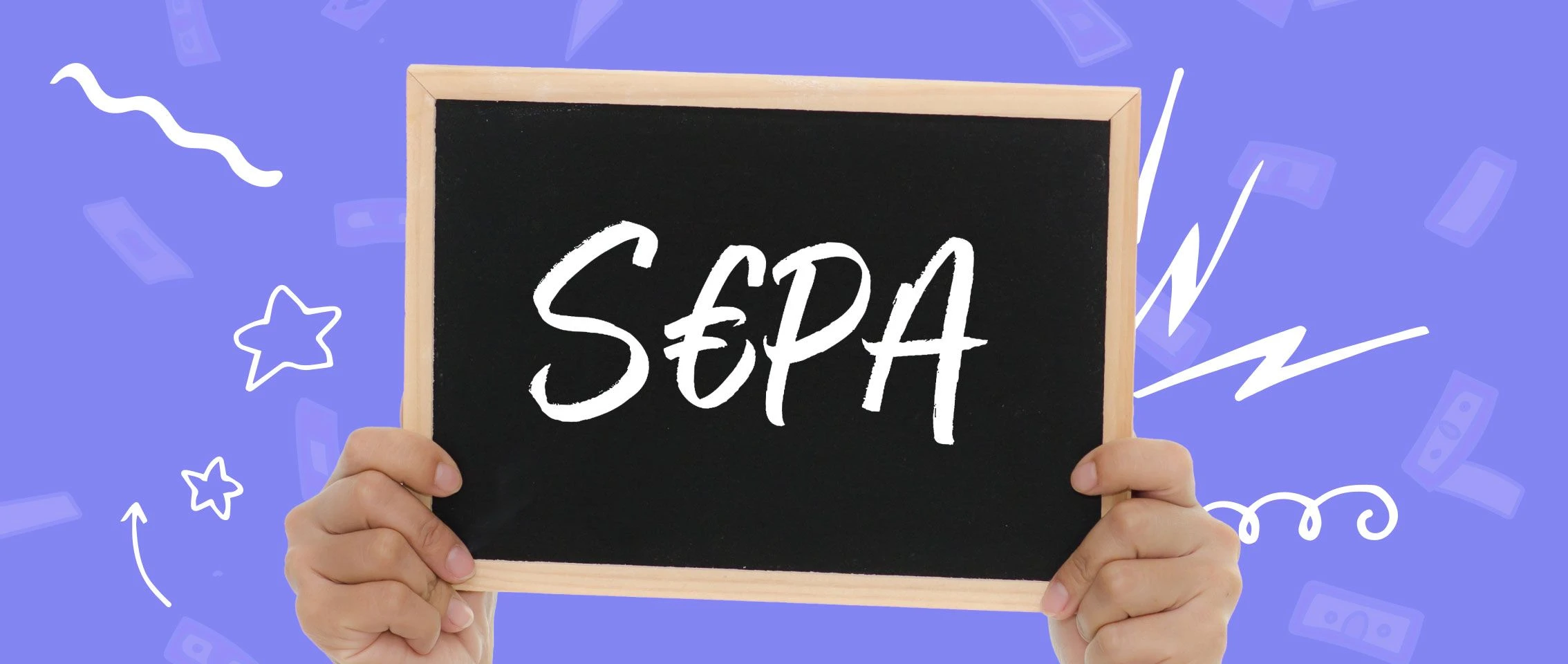Financial operations and particularly transfers are evolving, new services emerge offering advanced solutions, and sometimes it may take effort to figure out how they actually work. Even if you are used to a particular money transfer app, it is vital to know why it is faster or more beneficial than others. Knowing that will help keep your transactions secure. If you move to a new country, you may need to get used to a payment system you have never heard of before.
SEPA is a payment system available for domestic and cross-border transfers in thirty-six European countries. Have you ever googled the SEPA meaning? Have you ever wondered how long SEPA transfers take? And most importantly, do you know why so many Europeans prefer SEPA? Read this article to find your answers!
SEPA, which stands for Single European Payment Area, is a payment system that unites 36 European countries. Since the launch of SEPA in 2008, it has extended to connect most countries across Europe, regardless of their local currency. SEPA payments are rather popular in Europe as they have a range of advantages.
Why do you need to know about SEPA
In Europe, sending money to a bank account via a SEPA transfer is common. If you are an expat who came to Europe to work or to study, it may be useful to know why SEPA is that popular.
Let us explain how to make a SEPA payment. If someone wants to send you money via SEPA, they will need to know your IBAN or International Bank Account Number. Your IBAN is usually available in your bank account details. If you can't find your IBAN, you may call the bank's customer support team or go to the nearest branch for assistance.
A SEPA transfer is beneficial, thanks to low transaction fees. International euro money transfers with SEPA come at the exact cost as domestic, meaning that SEPA transaction fees for sending money abroad cannot exceed the fees applied to bank transfers within the country.
With the introduction of SEPA, money transfer procedures have become standardised and thus easier both for the customers and the banks. Therefore, in most cases, customers are likely to receive the money within 24 hours. The banks are required to meet a specific set of standards for SEPA money transfer procedures. In particular, the IBANs are unified; the first numbers of an IBAN allow identification of the country of the account. The standardisation implied by SEPA regulations makes financial operations, including cross-border transfers, simpler and faster.
Who can make a SEPA transfer
SEPA payments in the Eurozone became fully available in 2014, and in 2016 they expanded to many other countries. Therefore, sending or receiving a SEPA transfer requires holding a bank account in one of the SEPA countries, which include:
· EU member countries
Austria, Belgium, Bulgaria, Croatia, Cyprus, Czech Republic, Denmark, Estonia, Finland, France, Germany, Greece, Hungary, Ireland, Italy, Latvia, Lithuania, Luxembourg, Malta, Netherlands, Poland, Portugal, Romania, Slovakia, Slovenia, Spain, Sweden;
· EEA (European Economic Area) member countries
Iceland, Lichtenstein, Norway;
· Other countries
Andorra, Republic of Ireland, San Marino, Switzerland, UK.
Keep in mind that SEPA payments are only made in EUR. To make a SEPA transfer, one needs to hold a bank account in one of the SEPA countries listed above. To open a bank account in Europe, you need to be either a citizen or a resident of a European country. Non-citizens will be asked to present proof of legal residence and residential address before the bank approves account opening. These documents may include, but aren't limited to, your passport, proof of address (like your mortgage contract or utility bill), and sometimes proof of your income (for example, your employment contract).
SEPA transfer types
Those who relocate to Europe need to adjust to local payment methods. If you feel confused with the different banking setups and wonder how to navigate between the types of SEPA transfers, you can find the answer in the text above. As Single European Payment Area regulations oblige the banks to meet a certain set of requirements, the conditions for all transfers within the system are the same. They remain the same for any bank in any country. SEPA payments indeed make financial operations within the Eurozone simpler, but are there any alternatives worth considering?
SEPA: What are the alternatives
A wide range of payment methods are available within the Eurozone. Each of them has its advantages and is designed to make financial operations in the EU simpler and more secure. Understanding the peculiarities of various payment methods and transfer apps may be challenging. It becomes especially tough when you are new to the Eurozone and have much new information to digest. A thorough comparison of SEPA with each of other methods commonly used for remittance would require a separate article. Still, we will give you a brief overview of some popular ones.
PayPal is one of the best-known payment systems used in various countries. Initially created in the US, it was launched in the 90s and made it to IPO in 2002. Some twenty years ago, PayPal aimed to promote online financial operations and make them preferable over cash or cheque, which were common at the time.
Many transactions in the EU are executed via SWIFT. SWIFT is the abbreviation for the Society for Worldwide Interbank Financial Telecommunications. It is a non-bank system focusing on secure data exchange and financial operations. SWIFT is not a typical payment system. Money transfers in more than 200 countries worldwide are executed via SWIFT.
Certain European countries have their own payment methods. A good example is Sofort. Originating from Germany, it is also common in Austria, Belgium, and Switzerland. Sofort has additional online operations verification, which makes payments and transfers through the Internet more secure. However, sometimes the confirmation may affect the speed of the transaction. In some instances, it takes up to several days to complete an operation.
Finally, let us remind you about Profee: our service provides smart, secure, and hassle-free transfers. We are aware that in a globalised world, the demand for cross-border remittances is constantly on the rise, and therefore keep improving our service to make money transfers seamless for everyone, everywhere. We know that many EU residents do not wonder about SEPA's meaning, as they are used to it and trust its security standards. Therefore, we incorporated SEPA bank transfers into our service. We offer:
· transfers within SEPA
Both the person who is sending money and the one who is going to receive it need to have accounts in EU banks. The payment system is an additional guarantee of a fast and secure transaction. This type of transfer is available on Profee's website or mobile apps for iOs and Android.
· transfers from cards to SEPA accounts
To send money to a bank account within SEPA, one can use a bank card issued by any bank in the European Economic Area. In this case, the sender will be asked to enter the card details and the recipient's IBAN and full name. It is easy to do so at Profee's website or in the mobile app.
· transfers from SEPA accounts to debit and credit cards
This option may be used by those who have an account in a European bank and prefer to send money directly to the recipient's card, whether within the EEA or in other countries worldwide.
At Profee, we keep money transfers fast and secure. Whether you prefer sending money from one bank account to another (within SEPA) or from card to card, the procedure remains the same. Only the numbers you will fill in to make the transfer will differ.
Our data security standards meet the requirements of PCI DSS, which are trusted and followed by respected payment operators both in and outside Europe. Moreover, Profee transfers are fast: card-to-card transfers can be successfully completed in minutes. We also offer favourable currency exchange rates, making transfers beneficial for Profee customers.
Our conditions stay the same for all of our customers. You may be new to the Eurozone, just trying to figure out how to pay for the services or how SEPA transfers are executed. Or you may be a pro at EU financial operations, able to write a complete guide on all sorts of payment systems and online remittances. In any case, Profee offers you secure, simple, and beneficial money transfers.






